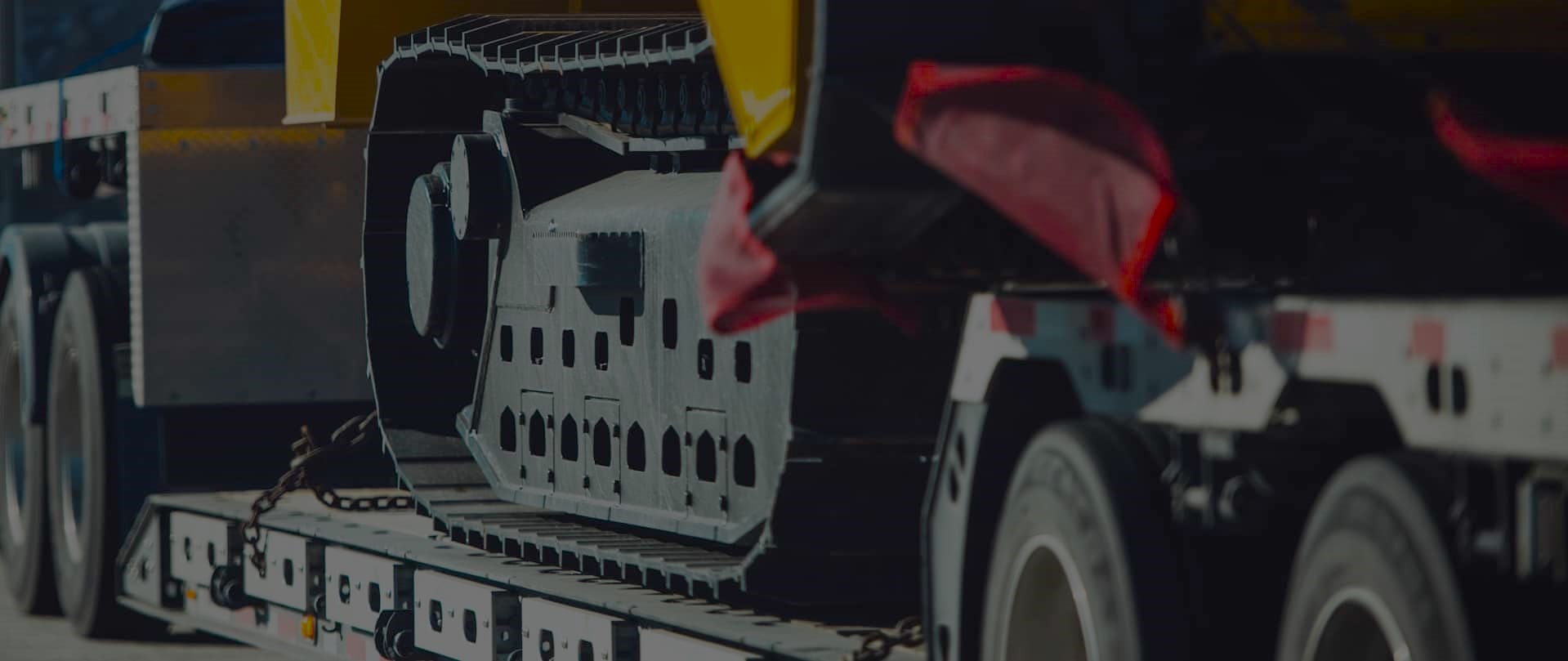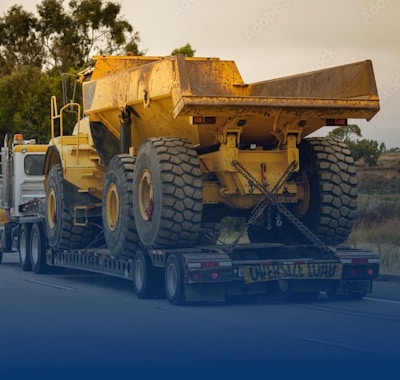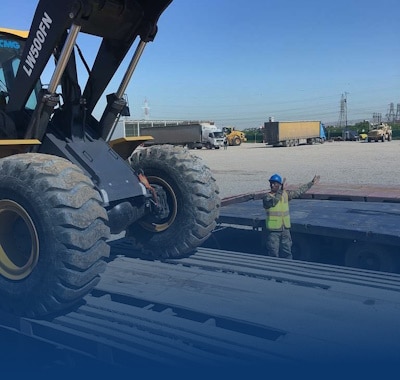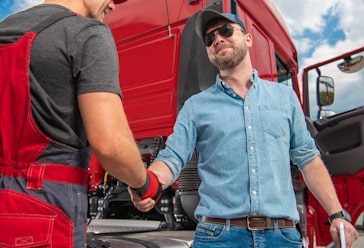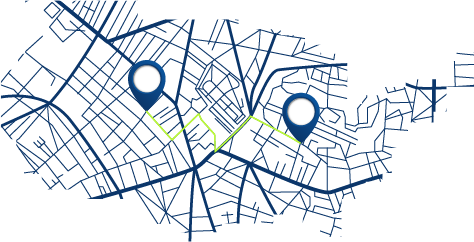Midwest Roadwork Delays on I-70 Impact Oversized Trucks
Freedom Heavy Haul can offer expedited Pickup and Delivery for any size shipment anywhere in the USA. Contact us today for No Hassle, No Pressure Pricing.
This FAQ explains how current and upcoming work zones affect wide loads along the I-70 corridor. From Kansas City to Columbus, this route links long hauls across several states and carries heavy truck volume. Expect plain, quick guidance for professional operators.
We cover closures, lane shifts, and detours that can add hours if you are not prepared. You will find where agencies post updates so you can plan a reliable route and avoid surprise hold-ups.
Why this matters: I-70 is part of the national highway system and a key freight spine. Its staging choices shape escort windows and move timing. Toll segments near Bonner Springs to Topeka and the Marine Highway 70 Corridor add routing options for time‑sensitive freight.
Actionable intel: Read on for metro hot spots, permit timing tips, and intermodal options that protect schedules when traffic pressure peaks. This introduction sets the scene for step‑by‑step advice ahead.
Current status on I-70 roadwork and traffic delays across the Midwest
A recent closure in Jefferson County showed how a single incident can shut major lanes and scramble regional routing. Early that weekday, a semi caught fire and leaked hydrochloric acid. Both directions of I-70 and adjacent US 40 closed, forcing large rigs onto tight side streets.
Diverted semis tried Grapevine Road. Sharp, partially unpaved turns proved unsuitable; one rig overturned and spilled fuel. Other combination vehicles became stuck on Lariat Loop Road. Crews cleared the scene and reopened all roads by 2:30 p.m.
“The event exposed thin alternate corridors and the need for clearer diversion management and faster communications from CDOT, State Patrol, and local law enforcement.”
- Traffic maps show scheduled work zones plus occasional full closures that multiply congestion near metros.
- Incident data demonstrates how quickly diversions can snarl when side routes lack proper geometry.
- Learn where agencies place cameras and message boards, and use those feeds to plan daily runs.
- Know the difference between planned maintenance and emergency closures for notification timelines and on‑road support.
Quick tip: Verify state detours, escort rules, and posted restrictions before you roll to limit surprises for drivers and large loads.
How oversized and overweight trucks are being impacted today
Bridge and lane adjustments in busy splits are forcing carriers to rethink routes now. Indiana’s I-65/I-70 South Split shows the effect: crews plan an approximate 59-day east-side closure to lower pavement beneath seven bridges. That work changes clearances for tall, heavy freight.
What drivers see day to day: reduced lane widths, temporary shoulder loss, and narrowed lanes that can preclude a permitted width. Some moves must use alternate options or shift to off-peak windows with escorts.
- Expect intermittent on/off-ramp closures that limit access to staging areas, layover lots, and scales.
- Shifting alignments with temporary barriers alter the effective swept path for long combinations, raising encroachment risk.
- When shoulders close, recovery and trooper pull-offs are tighter; plan extra time for inspections and escorts.
Bottom line: clearance projects like the South Split will improve long-term safety and lower structure-strike risk. In the short term, build route flexibility and use lower-volume windows to keep a wide truck moving with fewer interruptions.
Midwest roadwork delays on I-70 and impacts on oversized trucks
When crews set cones and barriers, drivers face tighter clearances and new timing rules. This corridor runs through major metros from Kansas City to Columbus, with heavy project activity near St. Louis, Indianapolis, and Dayton.
Which stretches matter most: Focus your routing through Kansas City, Columbia, Topeka, Lawrence, East St. Louis, Terre Haute, Indianapolis, and Columbus. These spots show the highest concentration of lane changes and staging.
Expect peak traffic pressure during weekday mornings and late afternoons. Plan wide permits for off-peak windows to avoid getting pinned in a lane drop.
- Recurring pinch points: interchange work, bridge lifts, and shoulder closures that reduce swing room for pilot-car operations.
- Cross-border coordination varies by state; permit windows and message timing can differ when you cross multiple jurisdictions.
- Practical tip: scout safe havens ahead. Construction often removes layover spots used for axle checks and securement inspections.
On the road, stay proactive: check state DOT feeds, confirm escort windows, and add buffer time for route changes. That keeps your wide load moving with fewer surprises and protects axle weights and securement integrity.
Why I-70 matters for freight: corridor, capacity, and percent truck volumes
Stretching about 1,216 miles from western Kansas to eastern Ohio, this route links major hubs and supports steady long-haul freight. Its role as a principal corridor makes it central to national supply chains.
Western Kansas to Eastern Ohio: the freight spine of the highway system
The corridor intersects with key interstates such as I-29, I-35, I-55, I-64, I-65, I-71, I-75, and I-77. This web of crossings gives carriers resilient routing options if a segment is constrained.
Truck activity is intense here: historic data shows a 27.9 percent truck share of vehicle miles traveled. That higher percent magnifies how work or capacity losses affect schedules and shipper commitments.
Parallel rail and Marine Highway M-70 as complementary corridors
Rail lines run close to much of the route, offering an alternate mode for bulk freight when highway capacity tightens. Marine Highway M-70 links Kansas City, St. Louis, Cincinnati, and Pittsburgh via the Missouri, Mississippi, and Ohio Rivers.
“When the highway faces constraints, rail and river options help absorb volume and protect delivery windows.”
- Capacity pinch points form first near metro nodes but can ripple into rural stretches.
- Intermodal terminals and ports along the corridor let shippers switch modes quickly.
- Targeted investments in lane continuity and bridge clearances keep heavy freight moving.
State DOT communications and incident response during closures
Real-time camera views and digital signs are the frontline tools for managing incidents and guiding reroutes. These devices help dispatchers and drivers react fast when a corridor closes or lanes shift.
The corridor has 181 cameras and 92 message boards. Coverage concentrates near major metros: Kansas City (54 cameras / 12 boards), St. Louis (46 / 44), Indianapolis (39 / 9), and Columbus (16 / 6).
Message boards and camera coverage by state and metro areas
Each department transportation uses feeds differently. Some publish live streams and feed raw data into statewide 511 systems. Others layer incident alerts into web maps for carriers.
| Metro | Cameras | Message Boards |
|---|---|---|
| Kansas City | 54 | 12 |
| St. Louis | 46 | 44 |
| Indianapolis | 39 | 9 |
| Columbus | 16 | 6 |
Lessons from Colorado’s closure and side-road diversions
The Colorado hazmat event forced semis onto Grapevine Road and Lariat Loop Road. Those routes proved unsuitable and caused additional crashes.
“Diversions must be vetted for heavy vehicles before implementation.”
- What DOTs do: push message-board alerts, stream cameras, and update regional 511 feeds.
- What carriers should do: subscribe to feeds, map camera views into your route-monitoring system, and confirm truck-suitable diversions.
- Workarounds: where device gaps exist (Illinois lacks coverage), add third-party apps and regional 511 subscriptions for extra options.
- Quick checklist: enable push alerts, save key camera links, and set dispatcher escalation rules so you don’t miss a reopening that can save schedule time.
Missouri focus: Improve I-70, safety, and truck-only lanes study
Missouri’s study looks at dedicated freight lanes as a practical way to cut crashes and speed hauls between Kansas City and St. Louis.
Corridors of the Future status led Missouri to complete an SEIS that examined separate truck-only lanes, constructability, and long-term benefits.
SEIS highlights and the corridor case
The SEIS found benefits such as reduced car-truck interactions, better freight flow, and operational redundancy when one set of lanes closes.
Safety rationale
Trucks account for about 28% of crashes and 40% of fatalities on this route. Separating movements aims to lower severe crash exposure for professional drivers.
How truck-only lanes could work
Design ideas include slip ramps and targeted interchange treatments to preserve local access while keeping freight moving efficiently. Enforcement might use cameras, restricted signage, and fines for misuse.
Funding and constructability
Most new lanes could fit inside existing right-of-way, which helps constructability and limits disruption. Funding remains the key hurdle: tolling would need voter approval in Missouri, so statewide finance plans are still pending.
“Dedicated freight lanes offer safety and reliability gains, but paying for them is the major question.”
Kansas to Ohio snapshot: designated truck routes and mobility corridors
Truck operators must read state maps closely here; a toll or a low bridge can change a planned move fast.
Kansas: The tolled segment runs from near Bonner Springs west to Topeka. The state publishes bridge restriction and vertical clearance maps for freight corridors. Carriers should verify clearance layers before filing permits.
Kansas: tolling segment, bridge and vertical clearance maps
Review online clearance maps and toll rules. That prevents reroutes and costly time lost at rerouting points.
Missouri, Illinois, Indiana, Ohio: route and commerce designations
Missouri and Illinois list this route as an official truck route. That status guides enforcement and upkeep priorities.
Indiana treats the corridor as a statewide mobility and high‑priority commerce route. Ohio includes it in the macro corridor highway system. These labels often mean faster repairs and targeted funding for heavy use.
Rail service runs parallel through most sections, offering alternative movement when highway capacity tightens. Eastern Ohio has gaps; plan modal switches accordingly.
| State | Designation | Key notes |
|---|---|---|
| Kansas | Tolled segment; clearance maps | Bonner Springs → Topeka; vertical limits posted |
| Missouri | Designated truck route | Priority enforcement and maintenance |
| Illinois | Designated truck route | Supports heavy freight movements |
| Indiana | Mobility & commerce corridor | High-priority interchanges and pavement |
| Ohio | Macro corridor highway | System-level planning; intermodal links |
“Use state maps and clearance layers as part of permit checks to avoid surprises.”
Urban freight nodes and bottlenecks: Kansas City, St. Louis, Indianapolis, Columbus
Urban ports and freeway connectors concentrate long hauls into a few miles, making timing and route choice critical. This section profiles where combination miles pile up and which links offer relief.
Average combination truck miles and key connectors
St. Louis places I-70 with I-270 and I-170 as the top three freight roads by average combination AADTT, moving 36.4% of truck miles on urban interstates.
Kansas City shows I-70 plus I-470 and I-670 among the city’s top freight routes, carrying 26.7% of urban interstate truck miles.
Construction near the I-65/I-70 South Split
The Indianapolis South Split work lasted about 59 days. Crews lowered pavement to add vertical clearance for tall freight.
The trade-off: short-term restricted access and narrower lanes but longer-term clearance gains for tall loads.
New Mississippi River Bridge relief
The New Mississippi River Bridge moved I-70 off the Poplar Street Bridge. That change reduced weaving and rebalanced lane use, which helps stabilize schedules for wide moves.
“Connector upgrades and targeted relief projects make routing more predictable for carriers.”
- Profile: kansas city and st. louis concentrate flows on the same interstates, creating repeat peak windows.
- Use connectors (I-270, I-170, I-470, I-670) to reach yards, terminals, and staging spots when mainline backups form.
- Columbus depends heavily on I-70 and I-71; monitor those interstates first when planning pickups or handoffs.
| City | Top Connectors | Freight % of Urban Interstate Miles |
|---|---|---|
| Kansas City | I-70, I-470, I-670 | 26.7% |
| St. Louis | I-70, I-270, I-170 | 36.4% |
| Indianapolis | I-65/I-70 South Split, I-70 connectors | High local concentration; short-term constraints during works |
| Columbus | I-70, I-71 | Major urban share; key for combination mile accumulation |
Detours and options when I-70 shuts down or narrows lanes
Active diversion control at the scene prevents unsuitable side routes from becoming accident scenes. The Colorado hazmat closure is a clear example: semis sent onto Grapevine Road and Lariat Loop Road encountered geometry and pavement limits that caused an overturn and secondary spills.
Practical playbook: before following a GPS detour, verify grade, curvature, surface type, and width so the chosen road can handle your footprint. A quick scout—either a pilot car or a dispatcher who checks live camera feeds—can keep a load safe.
- Check official channels first. State transportation sites and 511 feeds publish authorized diversions and preserve permit compliance.
- Keep clear contact lines. Tell drivers, pilot cars, and customers about reroutes immediately to reduce surprises.
- Expect rolling closures. Use pull‑ahead scouts or real‑time apps to confirm temporary lane drops won’t strand a wide vehicle between barriers.
“Diversions must be vetted for heavy vehicles before implementation.”
Bottom line: have a detour plan, verify side routes, and use live feeds and scouts. These simple steps cut risk and keep shipments moving when the mainline narrows or closes.
Truck parking, fuel, and stops along the corridor
Find secure places to stop early; full lots can force costly reroutes and hours lost. Use documented capacity bands to pick fueling sites that also offer room to park and rest. That reduces risk of running out of legal hours or missing inspection windows.
Where capacity exists: parking spot bands and high-capacity locations
Along this highway there are 89 fueling stops with truck parking. Ten sites have fewer than 25 spaces, 34 have 25–84 spaces, and 45 offer 85 or more spots.
Tip: prioritize 85+ locations for securement checks, crew rest, and timed deliveries. These clusters appear near major metros and select interchange nodes.
Alternative fuels: CNG and LNG options
Alternative-fuel infrastructure includes 6 public CNG, 7 private CNG, 3 planned public CNG, and 2 planned LNG stations along the corridor. If your fleet runs CNG, map these locations into daily route plans to avoid refuel gaps during construction or closures.
- Plan stops around inspection-friendly facilities so checks and refuels happen together.
- Use the provided data to avoid low-capacity sites during peak arrival waves near active projects.
- System approach: pair fuel windows with high-capacity lots to keep schedules tight while meeting safety checks.
Pavement condition, roughness, and work zones to expect
Road surface data drives when agencies schedule milling, overlays, or slab fixes that change how a vehicle tracks through a project. The International Roughness Index (IRI) measures roughness in inches per mile. Values under
Why IRI matters: higher roughness affects load stability, increases tie‑down stress, and forces speed management inside active work areas. Scan project notices for the listed IRI level so you can plan safe speeds and securement checks before entry.
Expect targeted improvements where IRI thresholds trigger action. Typical work includes milling and overlay, or full slab replacement when patterns repeat. These operations create fresh joints and temporary lips that challenge low-clearance gear.
Narrowed lanes and new joints change vehicle dynamics for long or tall loads. Increase following distance, hold lane position, and slow earlier when surface changes are announced.
“Check project scopes for grind or overlay notes — those clues tell you where a lip height could catch the lowest equipment.”
- Verify listed IRI in project summaries.
- Plan extra time for securement and inspections near active pavement improvements.
- Use lower speeds through work zones to reduce sway and cargo shift risk.
Intermodal, rail, ports, and airports that can offset highway constraints
Intermodal terminals and airports near the corridor offer practical options when highway stretches face extended work windows.
Key intermodal terminals and major rail yards
Rail yards in major hubs provide lift capacity and scheduled service windows that move freight off trucks when road access tightens.
Notable terminals include BNSF Argentine and UP Neff in Kansas City, CSX Rose Lake in East St. Louis, NS Luther in St. Louis, NS Rickenbacker and Buckeye in Columbus, and INRD in Indianapolis.
Air cargo hubs and handling capability
Airports such as IND (Indianapolis), LCK (Rickenbacker/Columbus), MCI (Kansas City), STL (St. Louis), and DAY (Dayton) offer strong cargo handling and specialized services.
Tip: use air for high-value, time-sensitive goods when highway options shrink; airports can absorb schedule risk quickly.
Marine Highway M-70 ports
Marine Highway M-70 links barge service from Kansas City through St. Louis, Louisville, Cincinnati, Huntington Tri-State, to Pittsburgh.
“Barge options provide cost-stable capacity that can replace long-haul truck miles during extended construction or closures.”
- Shift time-sensitive freight to rail intermodal where feasible; Kansas City and Columbus terminals handle high lift volumes.
- Air cargo backstops—especially IND and LCK—offer specialized handling for urgent goods.
- M-70 ports supply barge capacity that absorbs linehaul demand when truck routes face constraints.
- Keep the nearby yards list handy to plan modal pivots as projects expand.
Nearby terminals and hubs (quick reference)
| Type | Name | City | Notes |
|---|---|---|---|
| Rail yard | BNSF Argentine | Kansas City | High-volume intermodal lifts |
| Rail yard | UP Neff | Kansas City | Scheduled lifts; good for westbound moves |
| Rail yard | CSX Rose Lake | East St. Louis | Regional redistribution point |
| Rail yard | NS Rickenbacker | Columbus | Intermodal gateway with heavy lift capacity |
| Airport | IND / LCK / MCI / STL / DAY | Multiple | Air cargo hubs for time-sensitive goods |
Enforcement and definitions: what counts as a truck and where you can run
Knowing exactly which vehicles qualify for a dedicated lane keeps runs legal and predictable. MoDOT’s SEIS defines a truck as a commercial vehicle with three or more axles and weighing 22,000 pounds or more. That clear measure sets baseline eligibility for any truck‑only facility.
How enforcement would work: state and local law enforcement would patrol reserved lanes on the interstate and issue penalties set through state rulemaking. Expect citations to follow federal guidance for commercial vehicle operations.
Keep key documents handy: registration, gross vehicle weight paperwork, permit proofs, and escort certifications. These speed roadside checks and reduce the chance of an enforcement action that costs time and money.
- Definition clarity: axle count plus gross weight determines access.
- Enforcement focus: targeted near high‑crash locations and complex merges where safety matters most.
- Ongoing studies: planners use traffic, access, and community data to pick the best locations for dedicated lanes.
“Clear rules and ready documentation keep carriers moving and reduce enforcement friction.”
Safety, redundancy, and ITS operations to keep freight moving
Keeping loads moving safely through active work requires layered systems and quick information sharing.
Redundancy via separate truck lanes and work zone staging
Separate lanes for heavy vehicles create a backup path when a work zone closes the main set. That design protects schedules and reduces crash exposure for large rigs.
Staging work so one set of lanes stays open while crews work adjacent lanes gives carriers predictable windows. It also lets emergency responders reach incidents without blocking all capacity.
Coordinated ITS programs: ITS Heartland and ITS Midwest
States here participate in regional ITS collaboratives. Missouri and Kansas join ITS Midwest with Iowa, Nebraska, and Oklahoma. Illinois, Indiana, and Ohio work through ITS Heartland with Kentucky.
These partnerships align camera feeds, dynamic message signs, and incident protocols so that traveler information is consistent across state lines. The corridor has 181 cameras and 92 message boards concentrated near major metros, helping dispatchers spot problems early.
- What ITS delivers: early warnings, speed harmonization, and lane-status alerts that limit sudden stops.
- How carriers use it: integrate live feeds into your ops center so dispatch reroutes drivers before they hit a choke point.
- Design benefit: separate freight lanes provide redundancy so one closure doesn’t stop the entire corridor.
| Feature | Benefit | Who manages |
|---|---|---|
| Separate freight lanes | Operational redundancy; fewer full closures | State DOTs / project owners |
| Camera networks (181 devices) | Real-time incident detection and verification | ITS Heartland / ITS Midwest partners |
| Dynamic message signs (92 devices) | Traveler info, speed control, and detour guidance | State traffic operations centers |
“Integrate ITS feeds into dispatch platforms to turn early warnings into route changes before drivers reach work zones.”
Funding, tolling debates, and timelines drivers should watch
Budget gaps and voter rules now shape when major rebuilds can begin. Missouri reports no identified funding for corridor-wide reconstruction. Tolling is not allowed today and would need a public vote to move forward.
The recent SEIS compares truck-only lanes with adding general-purpose lanes. That study frames options but does not unlock construction money.
How this affects drivers: uncertain funding shifts project starts into multi-year windows. Track state legislative sessions and any bond or toll proposals that could change dates.
- Key milestones: SEIS completion, funding votes, final design, then staging.
- What to watch: ballot measures, DOT funding notices, and federal grant announcements.
- Fleet planning: expect long horizons; align staffing and equipment purchases with phased development.
“Reliable freight movement is central to the region’s economy, and that argument drives funding conversations.”
Carrier planning checklist for oversized loads on I-70
A short routing audit before dispatch can save hours and reduce enforcement risk. Use this checklist to confirm permits, clearances, and practical routing choices for wide moves.
Permits, clearances, and approved windows by state DOT
Verify permits for each state segment and confirm daylight or curfew windows before drivers depart. Kansas posts bridge restriction and vertical clearance maps — add those layers to your permit pack.
Note: Indianapolis crews lowered pavement beneath seven bridges to increase clearances; check those updates when planning tall loads.
Routing around urban pinch points and bridge restrictions
- Pre-plan fuel and inspection stops so crews avoid tight exits with sharp turns or construction-constrained access.
- Build routing options that use connectors with wider geometry (I-270, I-170, I-470, I-670) to bypass congested urban cores.
- Track the percent of truck flow on key connectors to anticipate enforcement and slowdowns during lane shifts.
- Keep alternate routes documented as formal options so dispatch can switch plans quickly.
“Confirm clearance layers and approved windows before you file the move — it prevents costly reroutes.”
| Item | Action | Why it matters |
|---|---|---|
| Permits | Confirm state windows and escort rules | Prevents stoppage at state lines |
| Clearance maps | Load into routing tools (Kansas maps available) | Avoids low-structure holds |
| Stops | Prebook fuel and inspection locations | Ensures legal hours and safe checks |
| Connectors | Use wider geometry routes for staging | Reduces pinch-point exposure |
Looking ahead: what drivers and shippers can expect next on I-70
Overall, a strong, staged approach is likely as departments of transportation and regional partners move from studies into targeted work. Missouri’s SEIS and Improve I-70 concepts keep truck-only lanes in the discussion while funding remains unresolved. Expect phased projects that protect traffic and give carriers predictability as planners refine sequencing and development windows.
In kansas city and st. louis, incremental improvements will smooth merges, add capacity, and reduce congestion near key interstates. Carriers should hedge risk by using rail and M-70 where feasible and by keeping an updated operations playbook that lists stops, side-route checks, and pavement level checks. At the nation level, this corridor will keep attracting studies and funding options that shape future freight movement and community outcomes.
